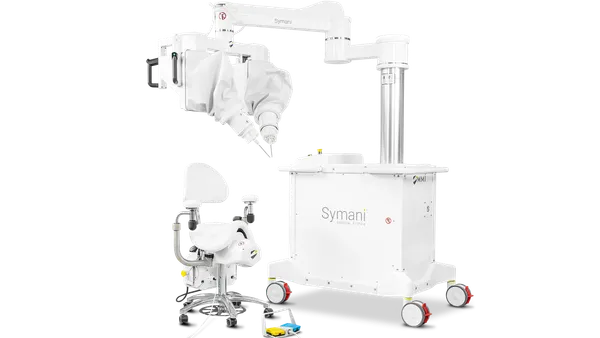Dive Brief:
- Edwards Lifesciences pulled in $1.2 billion of sales in the first quarter, 8% growth compared to the prior year's quarter, as elective care volumes recovered gradually from the declines experienced during the winter.
- CEO Michael Mussallem said during a Tuesday earnings call that while COVID-19 is still a pressing challenge, the company expects 2021 to be a year of recovery. "After an extraordinarily difficult global crisis, I'm encouraged by the signs of recovery, although we recognize that many people are still struggling around the world. Our sales growth this quarter was better than expected across all product lines," Mussallem said.
- Investors responded favorably to the numbers, which largely beat Wall Street estimates. Shares were up by 4.75% when the market opened Wednesday.
Dive Insight:
Edwards continues the early trend of procedure-dependent medtechs reporting elective volume recoveries in the first quarter, following Johnson & Johnson and Intuitive Surgical, both of which also reported this week.
The early signals are key for industry; the drop off in elective care slammed business throughout 2020. Analysts and industry project elective care will rebound in the second half of 2021 as vaccination numbers grow and COVID-19 cases drop.
The rebound comes after elective care volumes, once again, fell in the winter and left the company questioning if 2021 forecasts would be met. Guidance was released before hospitals' procedure volumes dropped in December of last year and continued into January and February.
"In our earnings call in late January, it felt pretty bad ... we felt like things had probably on the margin gotten worse, not better since our investor conference [in December,]" CFO Scott Ullem said during the call.
After making it through the lows of the winter, Ullem expressed confidence that sales growth between 15% to 20% in 2021 is achievable.
William Blair analysts wrote that despite potential challenges of COVID-19 cases rising or lingering longer than expected, Edwards could beat estimates.
"While COVID spikes could (and likely will) create some 'choppiness' in the ongoing recovery in the next few quarters, we were encouraged by commentary about strong first-quarter exit rates for key geographies that left us incrementally more comfortable in Edwards's ability to meet and potentially exceed 2021 expectations," the analysts wrote.
The recovery varied across geographies, with U.S. sales largely remaining flat in the quarter compared to the first quarter of 2019. Mussallem said volumes in the U.S. were still strained in January, February and early March and recovery did not come until the last several weeks of the quarter.
Meanwhile, sales in Europe, Japan and the rest of the world grew by 12.4%, 20.2% and 27%, respectively.
Edwards' transcatheter aortic valve replacement segment, which makes up the majority of the company's business, brought in $792 million in sales, representing about 7% of year-over-year growth. TAVR sales largely reflected trends across the company, with volumes largely stagnate in the U.S. and growing in international markets like Japan.
J.P. Morgan analysts wrote that TAVR sales beat expectations by $25 million in the quarter, writing that growth was "driven largely by countries with lower TAVR adoption (Australia, Canada, South Korea), while growth in Japan was strong and should improve later this year when reimbursement is approved."
The company expects TAVR sales to grow 15% to 20% in 2021 despite the slower recovery in the U.S.
Along with procedure volumes picking up, enrollment in clinical trials is growing. The company plans to finish enrollment for its trial of TAVR in patients with aortic stenosis that are asymptomatic by December. Edwards also plans to launch by the end of 2021 a trial for TAVR in patients with moderate aortic stenosis.
William Blair analysts wrote the upcoming trials signal Edwards has long-term growth plans for its TAVR business and is looking to expand to a patient population that can dramatically grow the market.
"The asymptomatic population alone could potentially double the U.S. TAM, and while development of this market could take some time, we expect it can provide a longer-than-expected tail on double-digit TAVR growth in the 2024-plus time frame," the analysts wrote.












